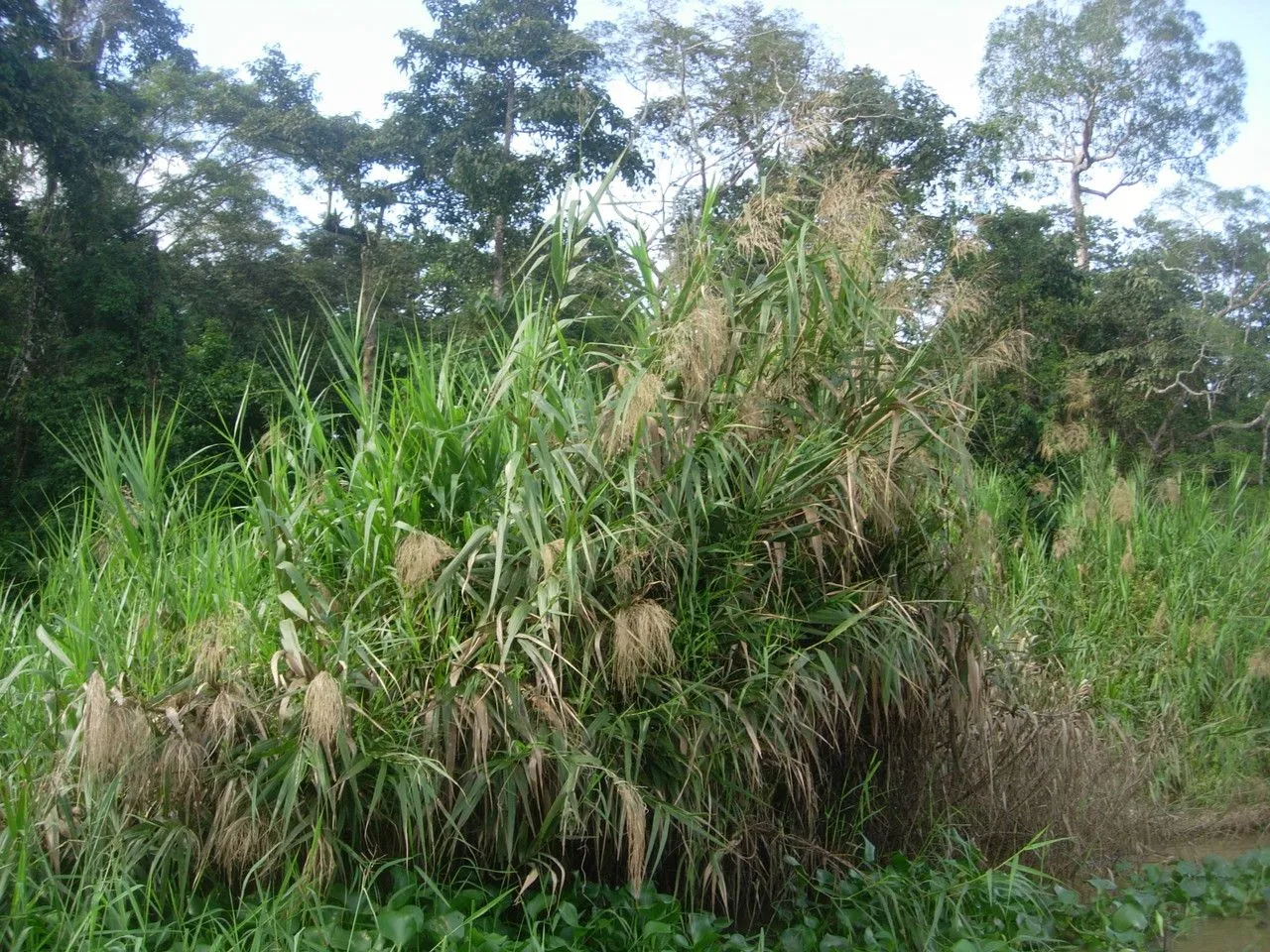
Author: L.
Bibliography: Mant. Pl. 2: 183 (1771)
Year: 1771
Status: accepted
Rank: species
Genus: Saccharum
Vegetable: False
Observations: Sicilia, Africa, Asia to N. & NE. Australia
Fodder cane, known scientifically as Saccharum spontaneum, is a resilient and versatile plant species with a broad geographical range. First described in 1771 in the seminal work “Mant. Pl. 2” by Linnaeus, this member of the Poaceae family has established itself across various continents, from the shores of Sicilia to the vast landscapes of Africa, and extending into Asia and the reaches of Northern and Northeastern Australia.
Adapted to thrive in a diverse array of environments, fodder cane is recognized for its crucial role in both natural ecosystems and agriculture. Throughout its native and introduced habitats, the plant operates as a key component in soil stabilization, helping to prevent erosion thanks to its extensive root system. Additionally, it serves as an important source of fodder, providing nutrition for livestock in regions where forage can be scarce.
Saccharum spontaneum demonstrates significant ecological adaptability, allowing it to colonize areas with varying climatic conditions. This hardiness makes it an indispensable resource in agricultural management and environmental conservation efforts. As a member of the Poaceae family, it shares characteristics with other grasses, such as fast growth and the ability to thrive in areas with poor soil quality.
Beyond its ecological importance, fodder cane has socio-economic implications in many regions. It supports rural economies by providing a dependable feed for livestock, contributing to the sustainability of farming communities. The vigorous growth and minimal care requirements of the plant make it a cost-effective solution for farmers looking to optimize forage production.
In conclusion, Saccharum spontaneum—more commonly referred to as fodder cane—embodies the resilience and versatility of grasses. Its widespread presence across several continents underscores its adaptability and importance in both ecological and agricultural contexts. As agriculture and environmental challenges continue to evolve, the role of fodder cane as a reliable and beneficial plant species remains significant.
Fra: canne sauvage, canne à sucre fourragère, canne dauvage
Eng: wild sugarcane, fodder cane
Por: cana-de-açúcar-selvagem
Ara: bous el-gazaier, heesh
En: Fodder cane, Wild sugarcane, Wild Sugar-Cane, Kans Grass, Thatch Grass, Wild sugar cane, Wild cane
Ar: بوص الجزاير، قلم (قُلّم)، حلفا (حَلفا), بوص فارسى، بوص قلم (أقلام), جزوف (جَزوف)، جنيش (جَنيش)، جزر (جَزر), حلفاء، ديس (دِيس)، حليم (حليم)ْ، حليو, غزار، غاب فارسى، غاب فَرسى, قلم (قَلَم، قَلَّم، قِلَّم), هيش، بوص، بوص جداوى (بوص جدّاوى), Bous El-Gazaier, Heesh
Fr: Canne sauvage, Canne à sucre fourragère, Canne Dauvage, Canne a sucre fourragere
It: Canna d’Egitto
Pt: Cana-de-açúcar-selvagem
Es: Caña silvestre
© copyright of the Board of Trustees of the Royal Botanic Gardens, Kew.
© copyright of the Board of Trustees of the Royal Botanic Gardens, Kew.
© copyright of the Board of Trustees of the Royal Botanic Gardens, Kew.
Taken Aug 18, 2021 by Fany Torre (cc-by-sa)
Taken Oct 29, 2022 by John Tasirin (cc-by-sa)
Taken Oct 12, 2022 by Folch (cc-by-sa)
Taken Aug 16, 2020 by SANTOSH YADAV (cc-by-sa)
Taken May 9, 2021 by CosTy di (cc-by-sa)
Taken Oct 29, 2022 by John Tasirin (cc-by-sa)
Taken Mar 6, 2009 by Tela Botanica − Liliane ROUBAUDI (cc-by-sa)
Taken Oct 12, 2022 by joao rui (cc-by-sa)
Taken Mar 5, 2009 by Tela Botanica − Geneviève Botti (cc-by-sa)
Taken Mar 6, 2009 by Tela Botanica − Liliane ROUBAUDI (cc-by-sa)
Taken Mar 6, 2009 by Tela Botanica − Liliane ROUBAUDI (cc-by-sa)
Growth habit>: Graminoid
Family: Myrtaceae Author: (F.Muell.) K.D.Hill & L.A.S.Johnson Bibliography: Telopea 6: 402 (1995) Year: 1995 Status:…
Family: Rubiaceae Author: Pierre ex A.Froehner Bibliography: Notizbl. Bot. Gart. Berlin-Dahlem 1: 237 (1897) Year:…
Family: Sapindaceae Author: Koidz. Bibliography: J. Coll. Sci. Imp. Univ. Tokyo 32(1): 38 (1911) Year:…
Family: Asteraceae Author: A.Gray Bibliography: Pacif. Railr. Rep.: 107 (1857) Year: 1857 Status: accepted Rank:…
Family: Fabaceae Author: Medik. Bibliography: Vorles. Churpfälz. Phys.-Ökon. Ges. 2: 398 (1787) Year: 1787 Status:…
Family: Aspleniaceae Author: (Cav.) Alston Bibliography: Bull. Misc. Inform. Kew 1932: 309 (1932) Year: 1932…